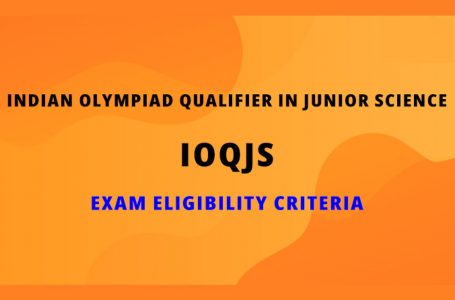All about Aam Aadmi Party (AAP)
History of Aam Aadmi Party (AAP)
The Aam Aadmi party was commissioned by a first time politician and a former IRS officer Mr. Arvind Kejriwal who had no connection with any existing political party. Most of the founders of the party were a part of the India Against Corruption (IAC) movement, which was led by veteran social activist Anna Hazare. All those who were part of IAC pushed for the Jan Lokpal Bill, which has the provision of investigation against the public servants facing criminal or corruption charges.
Though, the movement gained quite a momentum among the masses but soon the difference between the ideologies of Arvind Kejriwal and his mentor Anna Hazare started surfacing as Kejriwal started driving the movement politically. Anna Hazare has a stern belief that his movement shall not be politicized, but Kejriwal and his likes though that the well placed political system can help in bringing the desired change.
Due to these differences, Kejriwal and his allies decided to branch out of the movement and formally launched their own political venture called Aam Aadmi Party (AAP) on November 26, 2012. In March 2013, their party managed to get recognition from the Election Commission of India as well.
AAP came as a blow of fresh air for the common man who started seeing some hope in the Indian political system. Arvind Kejriwal not only led the party but also came up as a quintessential ‘aam aadmi’ fighting for the causes of the common man. The historical results of 2013 Delhi Assembly Elections where AAP won 28 out of 70 seats sent the sock waves across the Indian political circuit and established AAP as a force to reckon with. During that time only, AAP formed a government in Delhi with outside support from Indian National Congress. Party founder Arvind Kejriwal was sworn in as the Chief Minister of Delhi on 28 December 2013.
Leaders Of AAP
AAP was led by Arvind Kejriwal who unleashed a common man phenomenon in the Indian political system, which has never been done before. They made a very effective use of social media to induct educated volunteers in their party. AAP volunteers even campaigned from door to door to associate individuals having no political background with the party.
The initial political affairs committee formed by AAP leadership included Manish Sisodia, Kumar Vishwas, Yogendra Yadav, Prashant Bhushan, Gopal Rai and many more prominent names from different walks of life. They even managed to grab the attention from people like Captain Gopinath, Founder of Air Deccan, Mallika Sarabhai, Sameer Nair, Meera Sanyal, etc. but most of them soon called their association off with Arvind Kejriwal’s brainchild.
AAP, like any other political forum has faced its own share of internal conflicts and detraction, which has led to the departure of some prominent names from the party. The internal discord reached a level where the members started finding fault within the members and the leadership itself, but AAP managed to survive the political force.
Symbol Of The AAP
Because Arvind Kejriwal and his parry supporters have taken up the daunting task of cleaning the country from corruption, they decided to choose the humble ‘broom’ as the official election symbol for their party. They even chanted the slogan ‘Jhaadi Chalao, beimaan Bhagao’ to justify their slogan and aimed it towards cleaning the Indian political system from all sorts of corruption. The party fought for a more transparent system to fight corruption and also help the country reclaim its identity of being the world’s largest democratic nation.
Achievements of the AAP
After coming into power in Delhi, the first thing that party did is to reduce the electricity bills for up to 400 units using the subsidy system. They also provided free water to the households that have water meters installed but for up to 20 kiloliters only. The Kejriwal government also took some major steps that included scrapping of much debated Foreign Direct Investment (FDI) in multi-retail stores. In order to stick to their core vision and reason that led to the formation of the party, the Kejriwal led government set up an anti corruption helpline through which citizens can report against the corrupt government officials.
AAP and its Vision
Aam Aadmi party (AAP) initiated a project called Aap Ki Kranti with an objective to reach every door step in the country. They are also making efficient use of the newsletters to reach the masses with the focus on the mode of propagating, instigating and intimating the common man of India about AAP’s vision and ideologies. They are organizing so many activities for increasing awareness about the party even in the remotest areas of the country.
Gopal Rai, one of the prominent members of the AAP has taken the sole responsibility of the project and every step in being taken under the supervision only. Another party member Deepak Pilot is looking after the management and the team expansion part of the project so that they can have enough number of volunteers until 2019, when India will go under the election to form government at the center.
Under the project, every reader who is interested to get to know about the party and its initiatives has to pay an annual fee of Rs.100 and they will get the issue of the AAP newsletter, which is published every 15 days. They have also started a grievance helpline where a person just has to call on a helpline number, i.e. 8588833550.
AAP has also shown that they always take the Gandhian route of Swaraj to voice their concerns, which they have used in this movement as well. They will take the public route to voice their mission statements to the authorities at the center and will also engage in public meetings themselves to hear out the grievances of the people personally.
CM, Kejriwal has also sought to abolish the most prevalent VIP culture in the Capital. To do this, the first thing that he has done is to ban the use of red beacons on the government officials cars and also for the ministers. He has also taken away many special privileges from the ministers and bureaucrats. The party is also applauded for issuing permits to new 5,500 auto rickshaws in Delhi NCR.
AAP Political Dream So Far
Despite winning the Delhi elections in 2015 with historical results, AAP failed to repeat its performance in other parts of the country. The poor performance in 2017 Punjab and GOA assembly elections has put a great pressure on the party to stay on track and maintain its public image, which is getting maligned for some or the other reason for the past few months.





